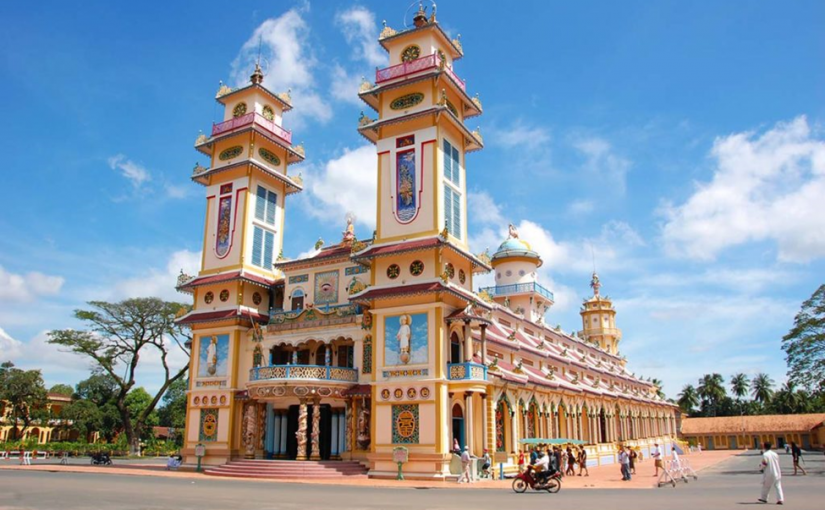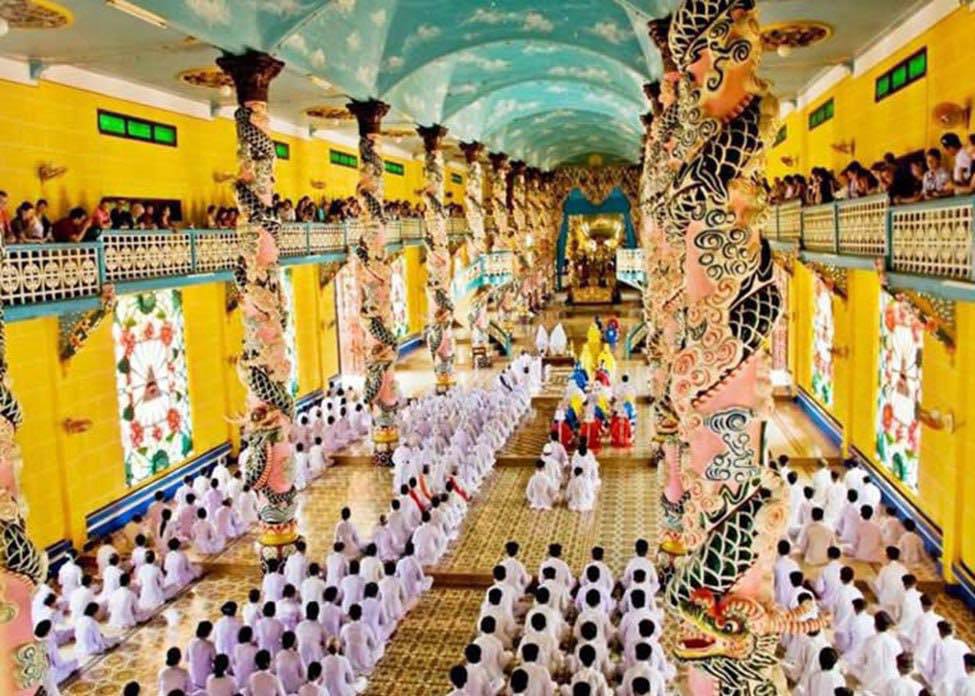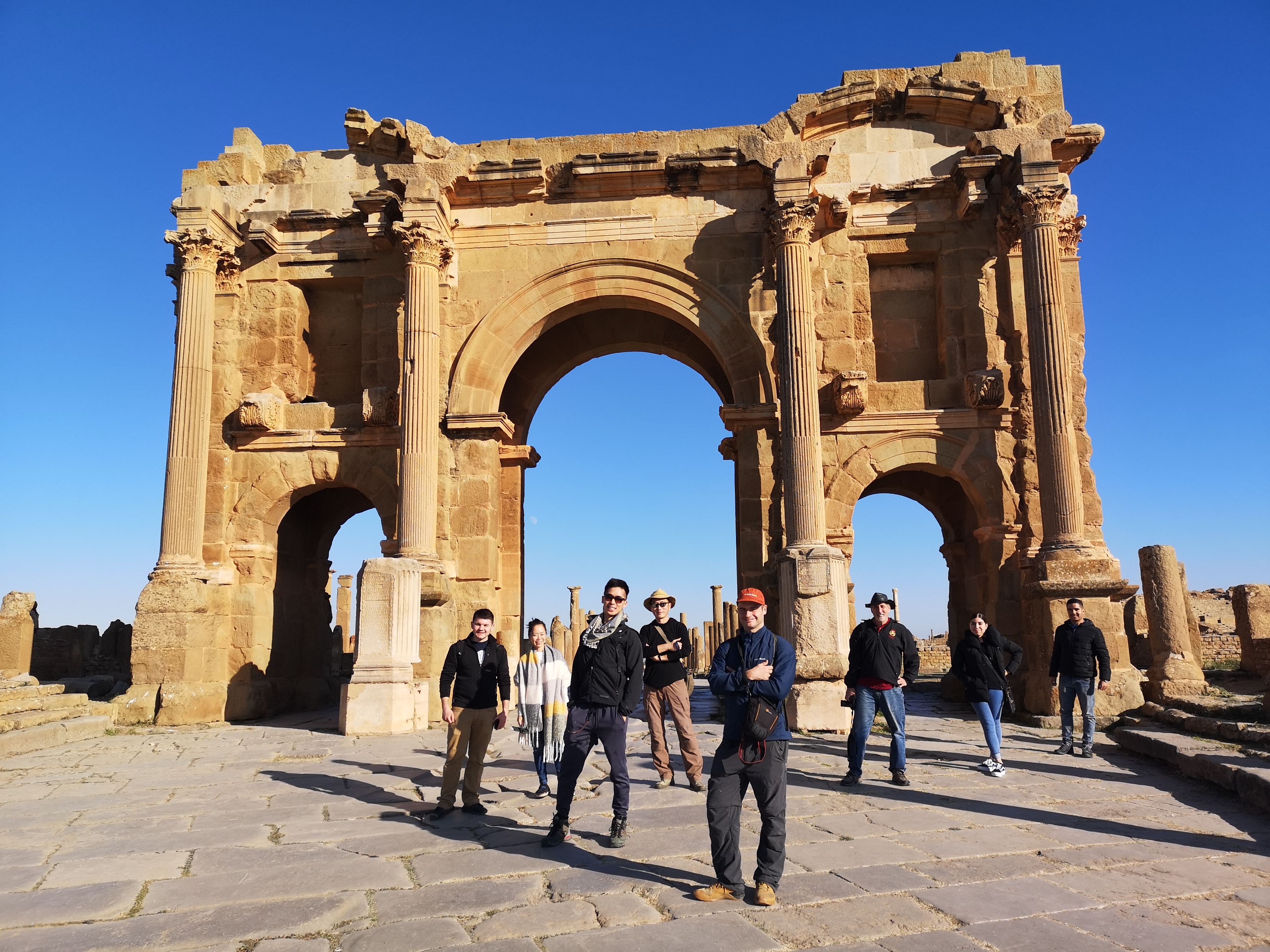
Cao Đài – Fascinating Religion
by Andy Khong
Cao Đài is a syncretic religion that originated in Vietnam during the 1920ies. It is a combination of elements from Buddhism, Confucianism, Daoism, Hinduism, Judaism, Christianity, and Islam. The religion is named after its supreme deity, Cao Đài, which means “High Tower” or “High Palace.”
The Cao Đài religion was founded in 1926 by a Vietnamese man named NGÔ Văn Chiêu. NGÔ claimed to have received a vision from God, who instructed him to establish a new religion that would unify all of the world’s great faiths.
The religion quickly gained popularity in Vietnam and by the 1930s had millions of followers. Cao Đài has its own unique pantheon of saints, which includes figures from both Eastern and Western religions. Today between 4.5 and 7 million Vietnamese adhere to the faith, which is still most popular in the Mekong Delta. Celibacy and vegetarianism characterize all clergy. The highest clergy, all of whom are men, are led by a Pope. Women make up a large portion of the lower clergy as well. The buildings have fairly consistent designs and employ a variety of symbols.
The headquarters of the Cao Đài religion is located in the Tây Ninh province of Vietnam, about 90 kilometers (56 miles) north-west of Ho Chi Minh City (Saigon). The main temple is called the Holy See, and is a large and beautiful ornate structure that features a combination of Eastern and Western architectural styles. The facade of the Cao Đài temple features two square pagodas and a large eye. The staircases that lead up to the main temple create the illusion that the exterior is sagging. Statues of Jesus Christ, Buddha, Muhammad, and Brahma stand peacefully side-by-side in the interior. The most widely recognized theme in the temple is the “divine eye”, which is enveloped by a triangle.

Inside Cao Đài Temple, Tây Ninh
One of the highlights for many visitors is attending a prayer at the Cao Đài Temple. It is a picturesque view with followers wearing white robes, while the priests are clad in yellow (Buddhism), red (Confucianism), and blue (Daoism). During prayer, men are seated to the right and ladies to the left. The “divine eye” with the Yin-Yang symbol in the pupil representing God is venerated while one is praying.

“Divine Eye” representing God in Cao Đài religion.
The religion has spread to other parts of the world, including the United States, France, and Australia, and with an estimate of a few million followers outside Vietnam.

Divine Left Eye, sacred symbol of Cao Đài.
YPT’s Ultimate South-East Asia Adventure goes to Vietnam: http://new.youngpioneertours.com/tour/ultimate-south-east-asia-adventure/
(Note: this tour does not go to Cao Đài Temple).

Join our newsletter!
Enter your email to receive our latest newsletter.
Don't worry, we don't spam

Popular Articles
Visiting Diriyah the Remarkable Cradle of the Saudi State
UnknownUzbek Trains 8211 the Best Network in the World
UnknownWill the Darvaza Crater be Extinguished by Turkmenistans Government
UnknownWhat Are the 10 Largest Stadiums in the World
UnknownDrone Photography Guidelines in China for 2025
UnknownSyria Travel Update
UnknownNorth Korea to reopen to tourism in Rason
UnknownYPT now offers free Internet access on all Greenland Svalbard and Antarctica cruises
UnknownRelated Articles
Visiting Diriyah the Remarkable Cradle of the Saudi State
George MorrisUzbek Trains 8211 the Best Network in the World
George MorrisWill the Darvaza Crater be Extinguished by Turkmenistans Government
George MorrisKo Panyi 8211 and the floating football pitch
Gareth JohnsonWill the new Chinese vaccine policy affect travel to North Korea
Gareth JohnsonFeatured Tours

Afghanistan Spring Tour
8 Nights, 8 DaysStart Date: May 19th 2025
Algeria, Mauritania, Mali and Burkina Faso Combo Tour
26 Nights, 26 DaysStart Date: January 14th 2022
75th Anniversary Party Foundation Day & Mount Kumgang Tour With Mass Games
8 Nights, 8 DaysStart Date: October 8th 2020
All Koreas Part 1: North Korea Borderlands
7 Nights, 7 DaysStart Date: June 13th 2025

